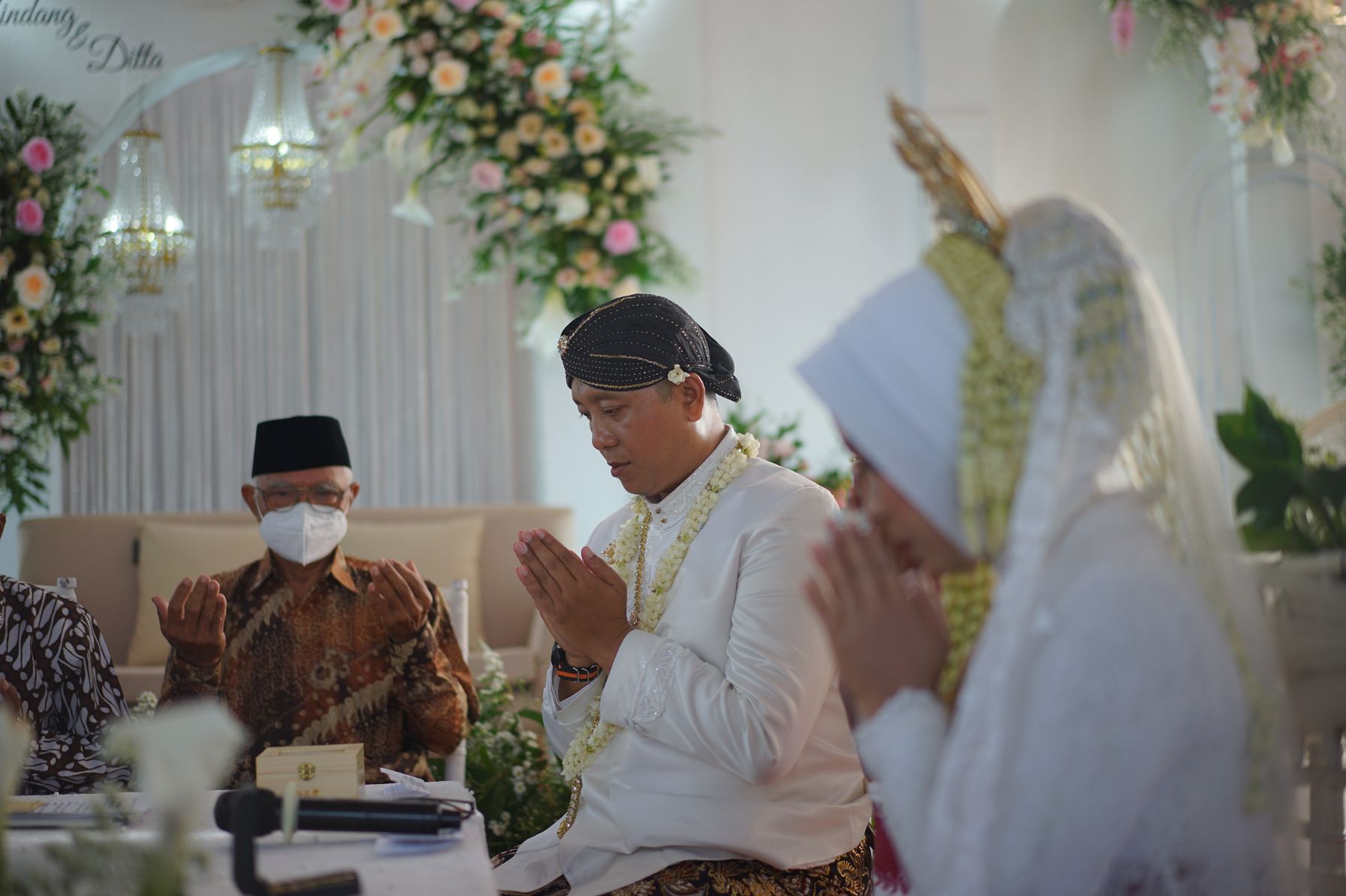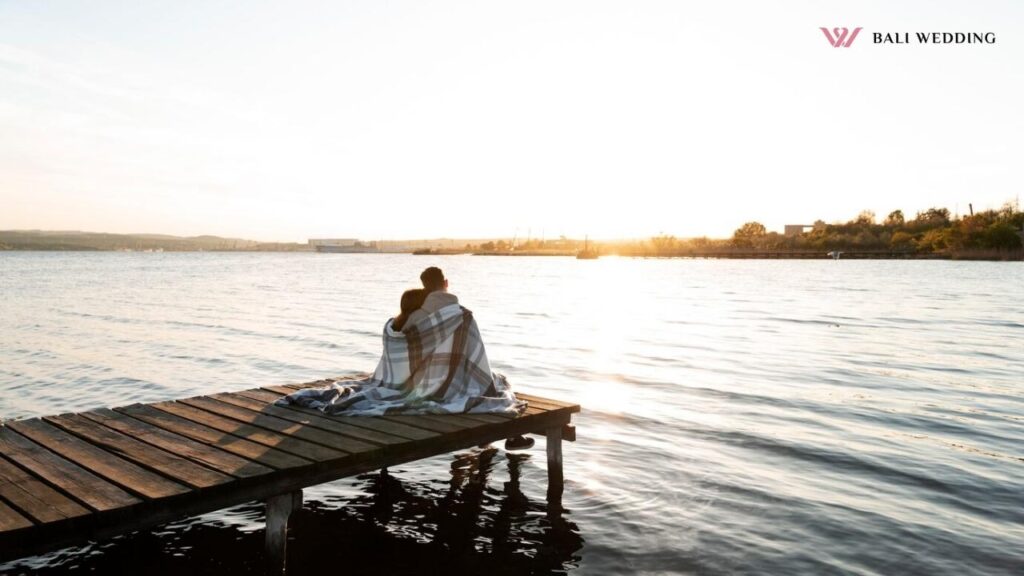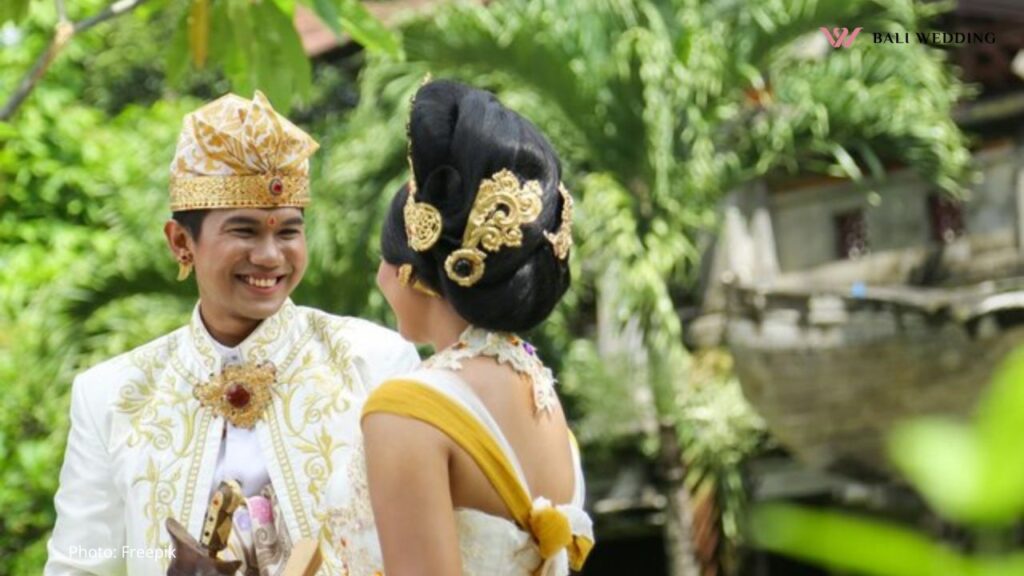December 20, 2022 • 8min read
Traditional Javanese Wedding Procession – A Complete Guide

If we have to choose 3 words that describe a traditional Javanese wedding ceremony, they would be – traditional, beautiful, and fragrant. A traditional Javanese wedding consists of several processions and every step works towards creating a new bond between two families.
The traditional Javanese wedding procession is a beautiful, time-honored event rich with cultural and historical significance. Each ritual within the ceremony is steeped in symbolism, reflecting the journey of two families uniting. For generations, these traditions have celebrated love, family bonds, and respect for heritage, with every step contributing to the sacred bond of marriage.
Javanese families view weddings as one of life’s most meaningful milestones, marking the start of shared responsibilities and a new journey together.
In each step, from the cleansing Siraman ritual to the symbolic Panggih meeting, families pass down stories, values, and customs that keep the spirit of Javanese heritage alive. A Javanese wedding celebrates Indonesia’s rich culture and centuries of history.
The Javanese couples and their families prepare the special ceremonies carefully as it entail many details and steps, no matter which tradition they’ve chosen. They usually form a small wedding committee consisting of close relatives and friends of both families. The size depends on how big the celebration will be and how many guests will be invited.
Need a Professional Wedding Planner?
"(Required)" indicates required fields
"(Required)" indicates required fields
In a Javanese society, a wedding ceremony is the most important event and reflects the social status of the families. This is why families sometimes borrow funds to make grand celebrations for their children’s weddings.
The role of a Pemaes, a traditional make-up artist who will lead the ceremony, is crucial in any Javanese wedding. She won’t only take care of the makeup and the bride and groom’s attire but also the offerings required and the different ceremonies during the special day.
A Javanese wedding has several variations, depending on the couple’s customs and social status. The wedding rituals include Siraman, Midodareni, Peningsetan, Ijab (for Muslim couples) or wedding sacrament (for Christian couples).
Siraman
The word ‘siraman’ is derived from the Javanese language ‘siram’, which translates to ‘take a bath.’ A Javanese wedding ritual means cleaning the couple (their bodies and souls). The Siraman ceremony is usually organized and performed in the afternoon, the day before the Ijab rituals.
The Siraman ceremony for the bride-to-be takes place in her parent’s house. There’s a limit to the number of people that give this ritual, usually only up to Deven people.
- Background: Conducted in the family home, the ritual involves parents and elders pouring water over the bride or groom as a sign of blessings. Some families collect sacred water from seven different springs, believed to bring good fortune.
- Variations: In some regions, Siraman involves a short prayer ceremony, while others incorporate specific flowers for added significance.
Midodareni
The name of this ritual is derived from the Javanese word ‘Widodari’, which means goddess. The bride-to-be turns into a beautiful goddess the evening before the wedding. The bride has to stay in her room from the afternoon until midnight and is accompanied by elder women who will give her useful life tips.
The groom’s family and her close friends should also visit her once in a while (all must be women). This is also the last time the bride has dinner with her parents, as she will be taken by her husband the next day.
- Background: The bride is secluded, receiving advice from elder women. This final meal with her family symbolizes a farewell to her role as a daughter before becoming a wife.
- Variations: Different regions have unique customs, such as offering specific foods to the bride or hosting special performances for family members.
Peningset
‘Srah-srahan’ or ‘Peningset’ comes from the word ‘singset’, which means ‘to tie up.’ This procession is usually conducted after or during Midoderani. During this time, the groom’s families visit the bride’s family to bring some gifts, such as Suruh Ayu (beautiful betel leaves), some batik cloths, kebaya and makeup, waist sash for women, fruits, staple fruit (rice, tea, sugar, cooking oil, etc), and ring sets for the couple.
The groom cannot visit the bride in the beautifully decorated wedding room. He would later arrive with his family but wasn’t allowed to enter the bride’s house. He must sit on the house’s veranda with friends and relatives and isn’t allowed to eat until midnight. After his family leaves the house, the groom is then allowed to enter the bride’s house, but not the wedding room.
- Background: Gifts usually include betel leaves (a symbol of unity), traditional batik cloth, and foods that signify abundance. Each item holds specific meaning, showing the groom’s respect and dedication.
- Variations: Some families exchange additional items like fruits or gold, depending on their social customs.
Ijab Kabul
The Ijab ceremony is a crucial step for legalizing marriage and the implementation is based on the couple’s religion. A ‘sajen’, which consists of flowers and food, is placed at the place of the Ijab.
The bride wears traditional Javanese makeup and ‘gelungan’, which is a special hair bun. She also wears golden pieces of jewelry and a special kebaya (traditional Javanese women’s clothes) for a wedding. The groom also needs to wear a special traditional outfit for this ceremony.
- Background: In Muslim ceremonies, the Ijab is officiated by an imam, while Christian ceremonies may involve a church leader. The bride and groom don traditional attire, enhancing the ceremony’s solemnity.
- Variations: Some families include additional offerings or blessings from family elders, particularly in mixed-faith marriages.
Panggih
‘Panggih’ or ‘temu’ is Javanese for ‘meeting.’ This is the moment when the bride and groom finally meet each other. The meeting is accompanied by traditional gamelan sounds played in front of the bride’s house.
There are many processions in Panggih, which start with the bride coming out of the bridal room, followed by rituals that involve both the bride and groom. Then ends with the couple asking for their parent’s blessings. Below are the details of each procession:
1. Balangan Suruh
This is when the bride walks out of the bridal room, accompanied by two older women. Her parents and close relatives also follow behind her.
The bride meets the groom. And when they’re a distance away, they start throwing seven bundles of betel leaves with lime inside tied with white yarn to each other.
2. Wiji Daji
The groom cracks a chicken egg with his right foot and the bride washes his foot with water mixed with various flowers. This shows that the groom is ready to become a father and the head of the family, with the bride faithfully supporting him.
3. Kacar Kucur
The couple holds each other with their pinky finger with the help of the Pemaes. Here, the groom offers soybeans, paddy rice, peanuts, corn, herbs, yellow rice and coins of different values to the bride.
This symbolizes that the husband should offer his income to his wife, and the bride should be a loyal and caring housewife.
4. Dahar Klimah or Dahar Kembul
The wedding couple feeds each other. The Pemaes offer the bride a plate consisting of yellow rice, fried eggs, tempe, soybean and fried bean. The groom makes up to three small balls of rice with his right hand and feeds it to the bride. After she has eaten, she’ll do the same for the bridegroom. Finally, they’ll drink sweet tea together. After the procession, the wedding reception will follow.
Many modern couples want to honor Javanese traditions in a way that fits their contemporary lifestyle. Here are practical tips on how to thoughtfully incorporate these customs:
Practical Planning Tips for Modern Couples
- Select Key Rituals: Not every couple may choose to include the entire suite of rituals, especially if there are time or budget constraints. Consider incorporating core rituals like Siraman, Panggih, or Ijab, which are integral to the cultural significance of a Javanese wedding.
- Personalize Attire with Traditional Touches: Integrate modern designs with traditional attire, such as blending a classic kebaya with contemporary fabric choices. Couples might also incorporate traditional Javanese accessories, like the bride’s “gelungan” or the groom’s “blangkon” (traditional headgear), to add cultural authenticity.
- Adapt Rituals for Modern Venues: Many traditional Javanese weddings take place at the family home, but modern venues can be transformed with the right decor. Incorporate Javanese elements, such as gamelan music, floral arrangements, and cultural icons, to maintain the essence of the rituals in a formal setting.
- Plan a Small, Intimate Siraman Ceremony: As Siraman is a private ceremony, consider keeping it intimate, involving only close family members. This preserves its sanctity while reducing costs.
- Involve a Skilled Pemaes: A traditional makeup artist, or Pemaes, will not only assist with attire and makeup but will also guide the couple through each ritual. Find a Pemaes who is experienced with modern adaptations of Javanese weddings.
- Budgeting for the Essentials: Traditional elements, like floral arrangements, attire, and offerings, may come with additional costs. Prioritize items central to the rituals, such as specific flowers for Siraman or symbolic items for Peningset, and communicate your budget and vision with vendors familiar with Javanese weddings.
Costs and Planning for a Traditional Javanese Wedding
Planning a traditional Javanese wedding combines cultural beauty with detailed organization, requiring a well-thought-out budget and practical tips to ensure everything runs smoothly. Here’s a breakdown of essential costs and vendor recommendations to guide you through planning.
1. Ceremony and Ritual Costs
A traditional Javanese wedding often includes elaborate rituals such as Siraman, Midodareni, and Panggih, each with its symbolic offerings and setup. Costs vary depending on the items used and the level of detail you wish to include.
- Offerings and Decorations: Each ritual involves symbolic items like fresh flowers, rice, and betel leaves, which carry blessings for the couple. To make this easy, consider sourcing high-quality offerings from trusted vendors, and explore floral arrangements from specialized Bali wedding florists for an authentic touch.
- Decor and Setup: For a Javanese wedding, traditional décor is key. Collaborating with professional decorators can help achieve an authentic look, from Javanese fabrics and mats to floral garlands. Renting traditional props is a great way to keep the atmosphere culturally rich while managing costs.
2. Venue, Attire, and Accessories
- Venue Preparation: Whether held at home or in a rented venue, the wedding space should reflect the beauty of Javanese tradition. Choosing a venue with ample space for traditional rituals can simplify setup. Be sure to check out gifts and accessories for personalized touches that your guests will remember.
- Traditional Attire: From the bride’s kebaya and gelungan to the groom’s traditional attire, a Javanese wedding look is elegant and symbolic. Renting or sourcing from local designers helps you achieve a high-quality look without overspending. Additionally, accessorizing with traditional Javanese jewelry adds sophistication and significance.
3. Guest Experience and Catering
Providing a memorable experience for guests is central to a Javanese wedding, often through a blend of traditional and modern catering styles. Catering to local tastes, consider a menu of classic dishes such as nasi kuning and side dishes, presented in a way that honors Javanese tradition. Working with caterers who understand the importance of traditional foods can ensure that the meal reflects the event’s cultural essence.
4. Practical Planning Tips for a Seamless Wedding
- Prioritize Rituals: Choose the rituals most meaningful to you. This allows for a personalized experience and helps in budgeting.
- Reserve Early with Vendors and Planners: From the Pemaes to florists, early booking ensures availability and often better pricing.
- Plan Your Honeymoon: For those dreaming of a Bali honeymoon, explore our guide on how to plan the perfect Bali honeymoon, with ideas that range from beachside relaxation to adventurous getaways.
- Connect with a Bali Wedding Planner: To make your wedding seamless, consider partnering with a planner who knows Javanese and Balinese wedding traditions well. They can assist with everything from decor to cultural requirements, simplifying the process so you can focus on enjoying the day.
Conclusion
A traditional Javanese wedding ceremony is truly a magical moment. It’s a sacred time when two different persons from different families come together and tie in a sacred marriage bond.
It’s also a symbol of a new life for the couple. And besides that, this Javanese wedding ritual is one way to preserve Indonesia’s rich culture. To incorporate both elegance and authenticity in your Javanese wedding, explore our other resources on Bali wedding planners and vendor recommendations.
For more details or to start planning your own unforgettable celebration, reach out to us at Bali Wedding Price to begin your journey toward a beautifully curated wedding in Bali.
Related Articles
Intimate Bali Wedding Ideas: Perfect Small Ceremony Guide
Complete Bali Wedding Packages: What’s Included and How to Choose
Have to decide how your dream wedding will look like?
Lorem ipsum dolor sit amet, consetetur sadipscing elitr.



